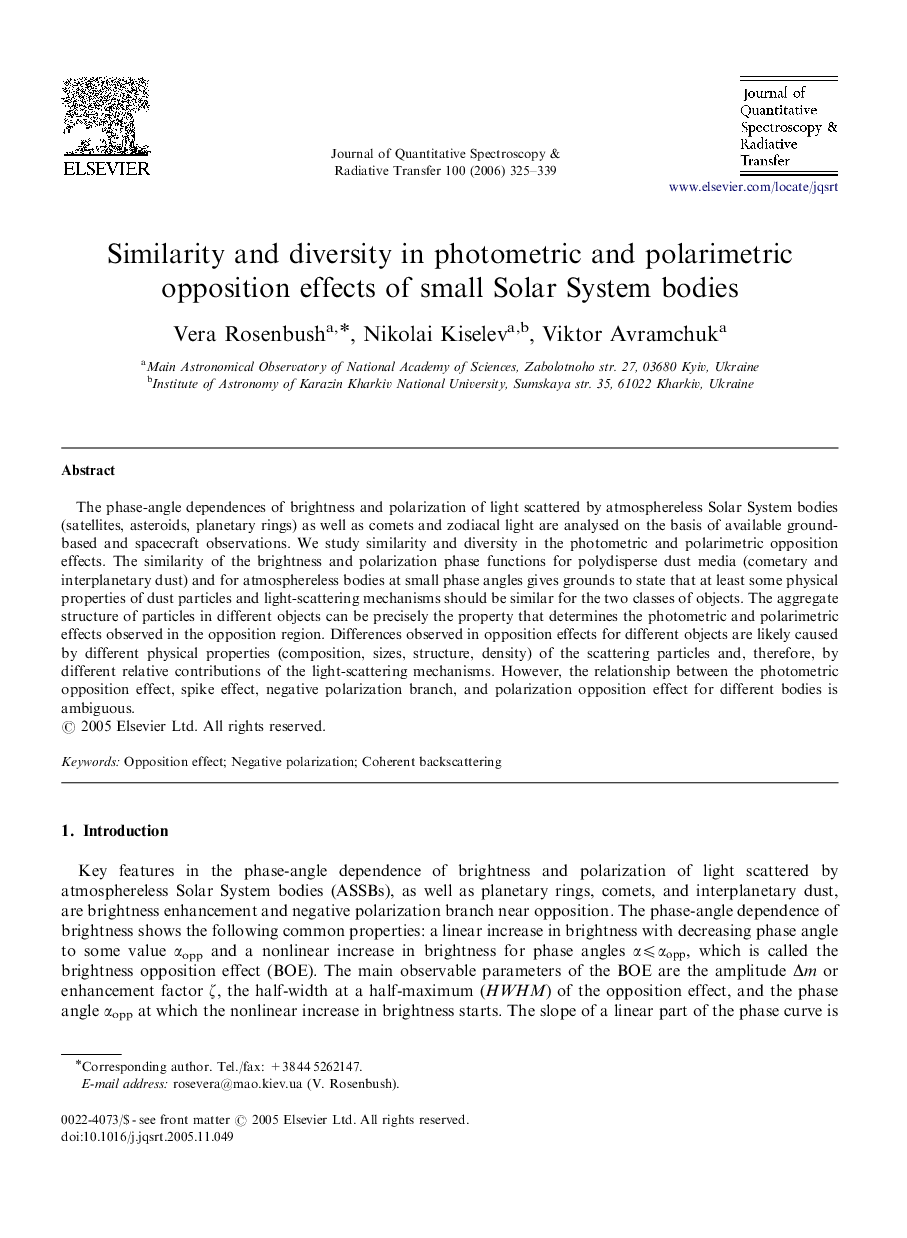| Article ID | Journal | Published Year | Pages | File Type |
|---|---|---|---|---|
| 5430661 | Journal of Quantitative Spectroscopy and Radiative Transfer | 2006 | 15 Pages |
The phase-angle dependences of brightness and polarization of light scattered by atmosphereless Solar System bodies (satellites, asteroids, planetary rings) as well as comets and zodiacal light are analysed on the basis of available ground-based and spacecraft observations. We study similarity and diversity in the photometric and polarimetric opposition effects. The similarity of the brightness and polarization phase functions for polydisperse dust media (cometary and interplanetary dust) and for atmosphereless bodies at small phase angles gives grounds to state that at least some physical properties of dust particles and light-scattering mechanisms should be similar for the two classes of objects. The aggregate structure of particles in different objects can be precisely the property that determines the photometric and polarimetric effects observed in the opposition region. Differences observed in opposition effects for different objects are likely caused by different physical properties (composition, sizes, structure, density) of the scattering particles and, therefore, by different relative contributions of the light-scattering mechanisms. However, the relationship between the photometric opposition effect, spike effect, negative polarization branch, and polarization opposition effect for different bodies is ambiguous.
